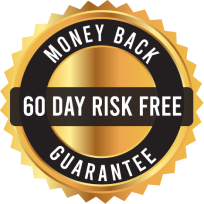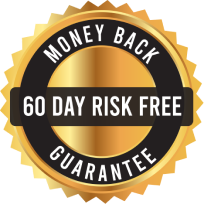Embracing the Circular Economy Training

Embracing the Circular Economy Training
Welcome to Embracing the Circular Economy training course.
This course is designed to help learners understand the circular economic model, its principles and how they differ from the linear economy model.
The importance of the Reduce, Reuse Recycle and Recover (RRRR) principles.
Business models that are aligned with the circular economies principles and their environmental and financial benefits. Existing policy and regulatory frameworks to encourage the adoption and use of circular economy practices. Metrics and indicators to measure progress in a circular economy.
Circular economy is a new way of thinking. The circular economy is a regenerative approach that aims to extend the life of products and materials while reducing waste. Recycling, reusing and remanufacturing are key. This bold move towards sustainable practices can create a future where nothing will be wasted.
This course provides all employees with a practitioner's level of knowledge on how to reduce waste and reuse materials. It also helps businesses improve their bottom line while improving the environment.
It is time to embrace circular economy.
Background - How Can Your Business Embrace The Tenets Of The Circular Economy?
Sustainability is no longer just a buzzword; it has become a necessary component of successful businesses worldwide.
One of the key strategies for promoting sustainability within your company is embracing the principles of the circular economy.
The circular economy model focuses on minimising waste and making the most of resources by promoting reuse, repair, and recycling.
One of the key principles of the Circular Economy is to preserve and enhance natural capital.
This involves using renewable resources efficiently, minimizing waste and pollution, and embracing sustainable practices that benefit both ecosystems and communities.
Principles of the Circular Economy also emphasise optimising resource yields. This involves extracting the maximum value and utility from products, materials, and resources by promoting reuse, refurbishment, remanufacturing, and recycling.
Strategies and Implementation
Product design for circularity:
-
Consider materials used, ease of disassembly, and potential for repair during product development.
-
Create products that are more sustainable and easier to recycle or repurpose at the end of their life cycle.
Business Model Transformation:
-
Shift from a linear 'take, make, dispose' model to a circular approach prioritizing resource efficiency and waste reduction.
-
Explore new revenue streams through services like product leasing, sharing, and take-back programs.
Benefits of Business Model Transformation:
-
Long-term cost savings: Reduce reliance on scarce resources and minimize waste generation.
-
Improved resilience: Build stronger relationships with customers through sustainable practices.
-
Enhanced competitiveness: Adapt to changing market demands and position the company for future success.
Aims and Objectives
-
Increase participants' understanding of the principles and benefits of the circular economy and its role in promoting sustainability and resource efficiency.
-
Motivate participants to embrace the circular economy paradigm shift and explore opportunities for implementing circular business models and practices.
-
Equip participants with the knowledge and skills necessary to transition towards a circular economy mindset and integrate circular practices into their organisations.
-
Empower participants to contribute to reducing waste, conserving resources, and mitigating environmental impacts through circular economy practices.
-
Understand the concept and principles of the circular economy, including the importance of regenerating resources, designing out waste, and closing material loops.
-
Establish metrics and monitoring systems to track the implementation of circular economy strategies and measure progress towards circularity goals.
-
Advocate for supportive policies and regulations that incentivise and facilitate the transition to a circular economy at the organisational, regional, and national levels.
What will you learn by completing the training course?
The Embracing Circular Economy Course provides employees with practical insight into the benefits and prospects of adopting practices for a circular economy. It focuses on the core principles, effective business models, key performance indicators, and practical implementation.
The Embracing Circular Economy Course provides learners with practical knowledge about:
-
The circular economy and its principles.
-
The importance of the Reduce, Reuse Recycle and Recover principles.
-
Business models that align with the principles of circular economy and their economic and environmental benefits.
-
Circular economy is a result of the policy and regulatory frameworks in place.
-
Metrics and indicators to measure progress in a circular economy.
-
Applying circular economy principles to their professional lives and becoming change agents within their organisations.
How Is the Training Delivered?
Embracing the Circular Economy training course is available online and completed in your own time.
This Embracing the Circular Economy training course is based on the learning outcomes outlined above.
The course is typically designed to be completed in a minimum of 35 minutes. However, the exact length of the course may depend on your ability and prior knowledge of the subject.
As the training is delivered online, you can complete it at your own pace.
What Accreditation Will You Get?
After Embracing the Circular Economy course, an assessment is conducted to determine if you have understood the information presented during the training course. If you pass this assessment, you receive a Certificate of Completion.
A Certificate of Completion is issued on successful completion of the course, and you are required to get an 80% pass mark to be deemed as understanding the content. It is recommended that training is conducted every 2 years to stay refreshed.
Is the course tax deductible?
Whilst you should get advice from your financial advisor to confirm, further training and education related to advancing your career is 100% tax deductible.
Approx. run time: 30 minutes.
SKU:
Course Highlights:
- On-demand Training
- Complete on Any Device
- Quality Focused
- Fast Certification
- Tax Deductable
- 100% Online
- 24 Months Unlimited Course Access
- Self-print Certificate
Couldn't load pickup availability

"Very detailed information, with the ability to shuffle and skip past parts that I knew. I actually enjoyed doing it. I was refreshed after completing the course. All in all, a fantastic refresher course."
Luke W."Straight forward and easy to understand. Thanks, OHS this is my second Refresher course."
Anonymous"Quick & relatively easy, done from the comfort of home."
David B"Really great courses on OHS website, would use this site again."
RhysADDITIONAL EXTRA BONUSES with OHS.com.au
Claim up to $1271.95 worth of Extra Bonuses
with every purchase
- Your personal copy of Safety Legends E-Book (value $39.95)
- $100 off your first case from Naked Wines (value $100)
- Upto 350,000 Bonus AMEX Frequent Flyer points* (value $1000)
- Complimentary Access to two online courses** (value $132)
$1271.95 EXTRA VALUE - JUST FOR YOU INSIDE!
* New customers when you successfully sign up for a new personal / business credit card ** Indigenous Cultural Awareness / Impacts of Climate Change coursesDescription
Welcome to Embracing the Circular Economy training course.
This course is designed to help learners understand the circular economic model, its principles and how they differ from the linear economy model.
The importance of the Reduce, Reuse Recycle and Recover (RRRR) principles.
Business models that are aligned with the circular economies principles and their environmental and financial benefits. Existing policy and regulatory frameworks to encourage the adoption and use of circular economy practices. Metrics and indicators to measure progress in a circular economy.
Circular economy is a new way of thinking. The circular economy is a regenerative approach that aims to extend the life of products and materials while reducing waste. Recycling, reusing and remanufacturing are key. This bold move towards sustainable practices can create a future where nothing will be wasted.
This course provides all employees with a practitioner's level of knowledge on how to reduce waste and reuse materials. It also helps businesses improve their bottom line while improving the environment.
It is time to embrace circular economy.
Background - How Can Your Business Embrace The Tenets Of The Circular Economy?
Sustainability is no longer just a buzzword; it has become a necessary component of successful businesses worldwide.
One of the key strategies for promoting sustainability within your company is embracing the principles of the circular economy.
The circular economy model focuses on minimising waste and making the most of resources by promoting reuse, repair, and recycling.
One of the key principles of the Circular Economy is to preserve and enhance natural capital.
This involves using renewable resources efficiently, minimizing waste and pollution, and embracing sustainable practices that benefit both ecosystems and communities.
Principles of the Circular Economy also emphasise optimising resource yields. This involves extracting the maximum value and utility from products, materials, and resources by promoting reuse, refurbishment, remanufacturing, and recycling.
Strategies and Implementation
Product design for circularity:
-
Consider materials used, ease of disassembly, and potential for repair during product development.
-
Create products that are more sustainable and easier to recycle or repurpose at the end of their life cycle.
Business Model Transformation:
-
Shift from a linear 'take, make, dispose' model to a circular approach prioritizing resource efficiency and waste reduction.
-
Explore new revenue streams through services like product leasing, sharing, and take-back programs.
Benefits of Business Model Transformation:
-
Long-term cost savings: Reduce reliance on scarce resources and minimize waste generation.
-
Improved resilience: Build stronger relationships with customers through sustainable practices.
-
Enhanced competitiveness: Adapt to changing market demands and position the company for future success.
Aims and Objectives
-
Increase participants' understanding of the principles and benefits of the circular economy and its role in promoting sustainability and resource efficiency.
-
Motivate participants to embrace the circular economy paradigm shift and explore opportunities for implementing circular business models and practices.
-
Equip participants with the knowledge and skills necessary to transition towards a circular economy mindset and integrate circular practices into their organisations.
-
Empower participants to contribute to reducing waste, conserving resources, and mitigating environmental impacts through circular economy practices.
-
Understand the concept and principles of the circular economy, including the importance of regenerating resources, designing out waste, and closing material loops.
-
Establish metrics and monitoring systems to track the implementation of circular economy strategies and measure progress towards circularity goals.
-
Advocate for supportive policies and regulations that incentivise and facilitate the transition to a circular economy at the organisational, regional, and national levels.
What will you learn by completing the training course?
The Embracing Circular Economy Course provides employees with practical insight into the benefits and prospects of adopting practices for a circular economy. It focuses on the core principles, effective business models, key performance indicators, and practical implementation.
The Embracing Circular Economy Course provides learners with practical knowledge about:
-
The circular economy and its principles.
-
The importance of the Reduce, Reuse Recycle and Recover principles.
-
Business models that align with the principles of circular economy and their economic and environmental benefits.
-
Circular economy is a result of the policy and regulatory frameworks in place.
-
Metrics and indicators to measure progress in a circular economy.
-
Applying circular economy principles to their professional lives and becoming change agents within their organisations.
How Is the Training Delivered?
Embracing the Circular Economy training course is available online and completed in your own time.
This Embracing the Circular Economy training course is based on the learning outcomes outlined above.
The course is typically designed to be completed in a minimum of 35 minutes. However, the exact length of the course may depend on your ability and prior knowledge of the subject.
As the training is delivered online, you can complete it at your own pace.
What Accreditation Will You Get?
After Embracing the Circular Economy course, an assessment is conducted to determine if you have understood the information presented during the training course. If you pass this assessment, you receive a Certificate of Completion.
A Certificate of Completion is issued on successful completion of the course, and you are required to get an 80% pass mark to be deemed as understanding the content. It is recommended that training is conducted every 2 years to stay refreshed.
Is the course tax deductible?
Whilst you should get advice from your financial advisor to confirm, further training and education related to advancing your career is 100% tax deductible.
Approx. run time: 30 minutes.
- Money Back Guarantee
- Save Time & Money
- Tax Deductible
- 1000's Trained Each Month
- Quality-Focused
- Peer Reviewed Courses
- Trusted Industry Partner
- Fast Certification
- 60 Day Guarantee
- *See refund policy


Got multiple people needing to do a course? We will get back to you within a day!
Student Reviews

Couldn't load pickup availability

Contact Us!
Contact form
ADDITIONAL EXTRA BONUSES with OHS.com.au
Claim up to $1271.95 worth of Extra Bonuses
with every purchase
- Your personal copy of Safety Legends E-Book (value $39.95)
- $100 off your first case from Naked Wines (value $100)
- Upto 350,000 Bonus AMEX Frequent Flyer points* (value $1000)
- Complimentary Access to two online courses** (value $132)
$1271.95 EXTRA VALUE - JUST FOR YOU INSIDE!
* New customers when you successfully sign up for a new personal / business credit card ** Indigenous Cultural Awareness / Impacts of Climate Change coursesDescription
Welcome to Embracing the Circular Economy training course.
This course is designed to help learners understand the circular economic model, its principles and how they differ from the linear economy model.
The importance of the Reduce, Reuse Recycle and Recover (RRRR) principles.
Business models that are aligned with the circular economies principles and their environmental and financial benefits. Existing policy and regulatory frameworks to encourage the adoption and use of circular economy practices. Metrics and indicators to measure progress in a circular economy.
Circular economy is a new way of thinking. The circular economy is a regenerative approach that aims to extend the life of products and materials while reducing waste. Recycling, reusing and remanufacturing are key. This bold move towards sustainable practices can create a future where nothing will be wasted.
This course provides all employees with a practitioner's level of knowledge on how to reduce waste and reuse materials. It also helps businesses improve their bottom line while improving the environment.
It is time to embrace circular economy.
Background - How Can Your Business Embrace The Tenets Of The Circular Economy?
Sustainability is no longer just a buzzword; it has become a necessary component of successful businesses worldwide.
One of the key strategies for promoting sustainability within your company is embracing the principles of the circular economy.
The circular economy model focuses on minimising waste and making the most of resources by promoting reuse, repair, and recycling.
One of the key principles of the Circular Economy is to preserve and enhance natural capital.
This involves using renewable resources efficiently, minimizing waste and pollution, and embracing sustainable practices that benefit both ecosystems and communities.
Principles of the Circular Economy also emphasise optimising resource yields. This involves extracting the maximum value and utility from products, materials, and resources by promoting reuse, refurbishment, remanufacturing, and recycling.
Strategies and Implementation
Product design for circularity:
-
Consider materials used, ease of disassembly, and potential for repair during product development.
-
Create products that are more sustainable and easier to recycle or repurpose at the end of their life cycle.
Business Model Transformation:
-
Shift from a linear 'take, make, dispose' model to a circular approach prioritizing resource efficiency and waste reduction.
-
Explore new revenue streams through services like product leasing, sharing, and take-back programs.
Benefits of Business Model Transformation:
-
Long-term cost savings: Reduce reliance on scarce resources and minimize waste generation.
-
Improved resilience: Build stronger relationships with customers through sustainable practices.
-
Enhanced competitiveness: Adapt to changing market demands and position the company for future success.
Aims and Objectives
-
Increase participants' understanding of the principles and benefits of the circular economy and its role in promoting sustainability and resource efficiency.
-
Motivate participants to embrace the circular economy paradigm shift and explore opportunities for implementing circular business models and practices.
-
Equip participants with the knowledge and skills necessary to transition towards a circular economy mindset and integrate circular practices into their organisations.
-
Empower participants to contribute to reducing waste, conserving resources, and mitigating environmental impacts through circular economy practices.
-
Understand the concept and principles of the circular economy, including the importance of regenerating resources, designing out waste, and closing material loops.
-
Establish metrics and monitoring systems to track the implementation of circular economy strategies and measure progress towards circularity goals.
-
Advocate for supportive policies and regulations that incentivise and facilitate the transition to a circular economy at the organisational, regional, and national levels.
What will you learn by completing the training course?
The Embracing Circular Economy Course provides employees with practical insight into the benefits and prospects of adopting practices for a circular economy. It focuses on the core principles, effective business models, key performance indicators, and practical implementation.
The Embracing Circular Economy Course provides learners with practical knowledge about:
-
The circular economy and its principles.
-
The importance of the Reduce, Reuse Recycle and Recover principles.
-
Business models that align with the principles of circular economy and their economic and environmental benefits.
-
Circular economy is a result of the policy and regulatory frameworks in place.
-
Metrics and indicators to measure progress in a circular economy.
-
Applying circular economy principles to their professional lives and becoming change agents within their organisations.
How Is the Training Delivered?
Embracing the Circular Economy training course is available online and completed in your own time.
This Embracing the Circular Economy training course is based on the learning outcomes outlined above.
The course is typically designed to be completed in a minimum of 35 minutes. However, the exact length of the course may depend on your ability and prior knowledge of the subject.
As the training is delivered online, you can complete it at your own pace.
What Accreditation Will You Get?
After Embracing the Circular Economy course, an assessment is conducted to determine if you have understood the information presented during the training course. If you pass this assessment, you receive a Certificate of Completion.
A Certificate of Completion is issued on successful completion of the course, and you are required to get an 80% pass mark to be deemed as understanding the content. It is recommended that training is conducted every 2 years to stay refreshed.
Is the course tax deductible?
Whilst you should get advice from your financial advisor to confirm, further training and education related to advancing your career is 100% tax deductible.
Approx. run time: 30 minutes.
- Money Back Guarantee
- Save Time & Money
- Tax Deductible
- 1000's Trained Each Month
- Quality-Focused
- Peer Reviewed Courses
- Trusted Industry Partner
- Fast Certification
- 60 Day Guarantee
- *See refund policy
Student Reviews

Course Highlights:
- On-demand Training
- Complete on Any Device
- Quality Focused
- Fast Certification
- Tax Deductable
- 100% Online
- 24 Months Unlimited Course Access
- Self-print Certificate
Couldn't load pickup availability

"Very detailed information, with the ability to shuffle and skip past parts that I knew. I actually enjoyed doing it. I was refreshed after completing the course. All in all, a fantastic refresher course."
Luke W."Straight forward and easy to understand. Thanks, OHS this is my second Refresher course."
Anonymous"Quick & relatively easy, done from the comfort of home."
David B"Really great courses on OHS website, would use this site again."
Rhys


Are you from a large organisation? Contact us for a group quote!
 Checkout securely with
Checkout securely with
With the rising need for effective and accessible training, OHS was established to offer online health and safety solutions. Our mission is to offer professionals flexible, premium training solutions that help them keep their skills sharp without interfering with their demanding routines.
At OHS, our comprehensive training solutions cover NDIS Training, Safety Training, Staff Training and VOCs/High Risk Refreshers, all crafted to be flexible and cost-effective. Our straightforward approach ensures professional development is within reach, so you don't have to keep looking up terms like 'First Aid Officer Training', 'Disadvantages Of First Aid Training' or 'Manual Handling Manual' online.
OHS offers the flexibility to buy courses separately or choose an annual subscription for unlimited access to our vast training library. Don't waste time searching for 'manual handling training victoria','ndis courses online' or 'asbestos awareness course' - buy a course or make an enquiry today!
 1300 307 445
1300 307 445

